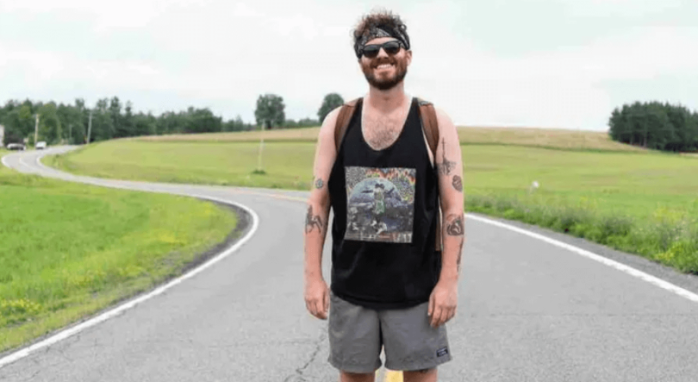The public grilled a panel of 2025 Democratic mayoral candidates on Monday on how they plan to improve NYC’s busy transit system if elected to public office.
At the forefront of the spirited transit-focused event was headline-making congestion pricing.
The Riders Alliance, a local bus and subway advocacy group, hosted the Transit Riders Mayoral Forum, moderated by WNYC/Gothamist City Hall reporter Elizabeth Kim at BRIC Arts Media in Downtown Brooklyn.
Six candidates for the city’s top job — NYC Comptroller Brad Lander, state Assembly Member Zohran Mamdani, state Senators Zellnor Myrie and Jessica Ramos, former NYC Comptroller Scott Stringer, and attorney Jim Walden — answered questions related to transit, including congestion pricing, safety and reliability issues.
Current Mayor Eric Adams was noticeably absent from the event. Still, the other contenders lit up the stage with their thoughts on transit issues, with congestion pricing, going into effect Jan. 5, stealing the spotlight.
‘An opportunity to reshape the streetscape’

Though the MTA, a state agency, runs congestion pricing, the candidates agreed that the mayor still has a major role in shaping the controversial plan within the city’s massive transit system.
“The first thing I would do is look at congestion pricing as more than simply a revenue generator for the MTA,” Mamdani said. “This is an opportunity to reshape the streetscape.”
Several candidates, including Myrie, who is chairman of the state Senate Elections Committee, wasted no time calling out Mayor Adams’ shortcomings in transit efficiency while seeming to highlight Hizzoner’s quiet stance on Donald Trump’s victory in the 2025 U.S. presidential election.
Trump has repeatedly doubled down on nixing congestion pricing.
“We had a mayor that when congestion pricing was paused, said nothing for two days,” Myrie said. “At minimum I’d be prepared to defend congestion pricing regardless of who is president of this country.”
The state senator also stressed his support of congestion pricing, which he said creates more opportunities for public space, including pedestrian plazas.
Ramos, of Queens, doubled down on using congestion pricing to generate revenue for the MTA, while Stringer said the mayor has a key role in “controlling these streets” of NYC.
The former top money boss for the Big Apple had choice words about the city’s Department of Transportation and said lots of infrastructure changes need to be implemented to ensure the success of congestion pricing.
“When I’m mayor, we’re going to reorganize the Department of Transportation and put them to work,” he said. “We’re going to realize my plan of making sure that buses and trains run six minutes apart. We’re going to initiate the greatest bus expansion plan, and we’re going to find the money to do it. It’s a small down payment, congestion pricing.”
Stringer also suggested flipping the gas tax, which he said generates $1.8 billion annually.
“But 64% goes to state highways. 34% goes to NYC streets and subway infrastructure,” he highlighted. “We need that money. And what we’re going to do with that money is expand our bus routes.”
Walden, a former federal prosecutor, spoke for seniors and disabled New Yorkers, whom he said should not have to pay for congestion pricing. Lander spoke about his role in leading litigation that went into effect when Gov. Kathy Hochul paused the program.
Subway crime
Transit riders also asked about bus reliability and safety on the subways. While the NYPD has boasted a notable reduction in subway crime — with major arrests across the five boroughs reaching the highest levels since 1998 – the candidates said more needs to be done.
Walden stood out among the panelists by doubling down on stopping repeat offenders.
“The NYPD will be the first to tell you recidivists are the main problem with respect to crime on the subways,” he said. “In 2023, they did an analysis and found that there were 38 individuals arrested for violent crimes, and together, they had over 1,100 arrests for violent crime on the subway prior to arrests that got them to where they were.
Simply put, combatting crime by repeat offenders requires more police on the subways, Walden said. He added there needs to be more services to help mentally ill New Yorkers who prefer being in the subways to shelters.
“It is a problem that needs to be solved for the benefit of the mentally ill who are using the subways basically because of the problems in the shelter system,” he said. “And the only way you can do that is to have services in major subway systems.”
He suggested using vacant stores as central locations for services that mentally ill New Yorkers can access.
“There’s food, there’s clothing, there’s intake, there’s outreach,” he explained. “The mentally ill can be moved into facilities that can give them the care that they need.”
Lander refuted Walden’s subway services plan by saying stable housing will get the homeless and mentally ill off the streets and out of the subway.
“We will be laying out our plan that shows how we can take the several thousand people who are mentally ill and on the streets and subways of our city and through a continuum of care and services with some enforcement but primarily a path to housing to end street homelessness of severely mentally ill people,” he added.
Mamdani advocated for “correctly trained” street outreach teams to help homeless individuals in the subways.
Myrie said he would “smartly deploy” police officers in the subway system without having them “bunched up” at turnstiles to help straphangers stay safe.
Meanwhile, Ramos said police officers should not be responding alone to mental health emergencies on the subways.
“As your mayor, I’d like to upscale EMS and EMT workers and actually inject clinicians into the B-HEARD program,” she said.
B-HEARD (Behavioral Health Emergency Assistance Response Division) is the city’s program that includes a mental health professional as a first responder to 911 mental health calls.





































